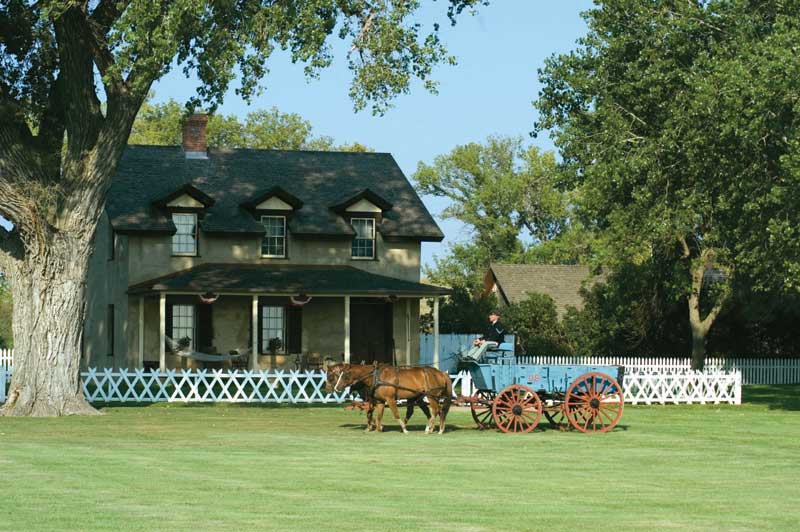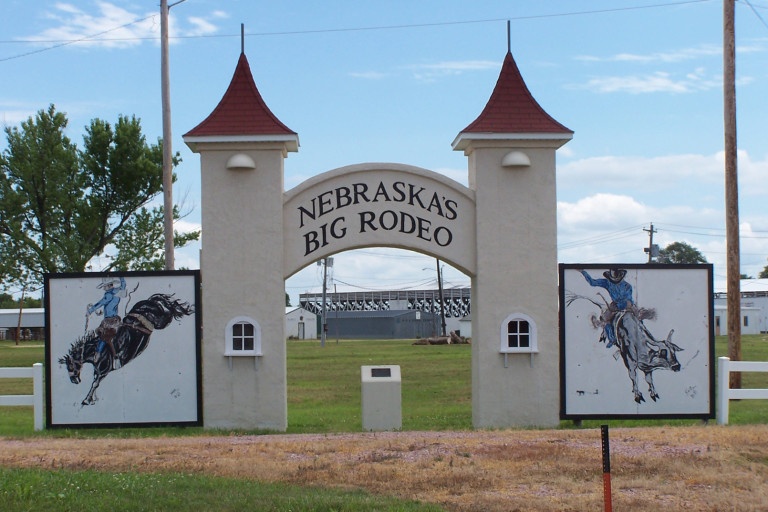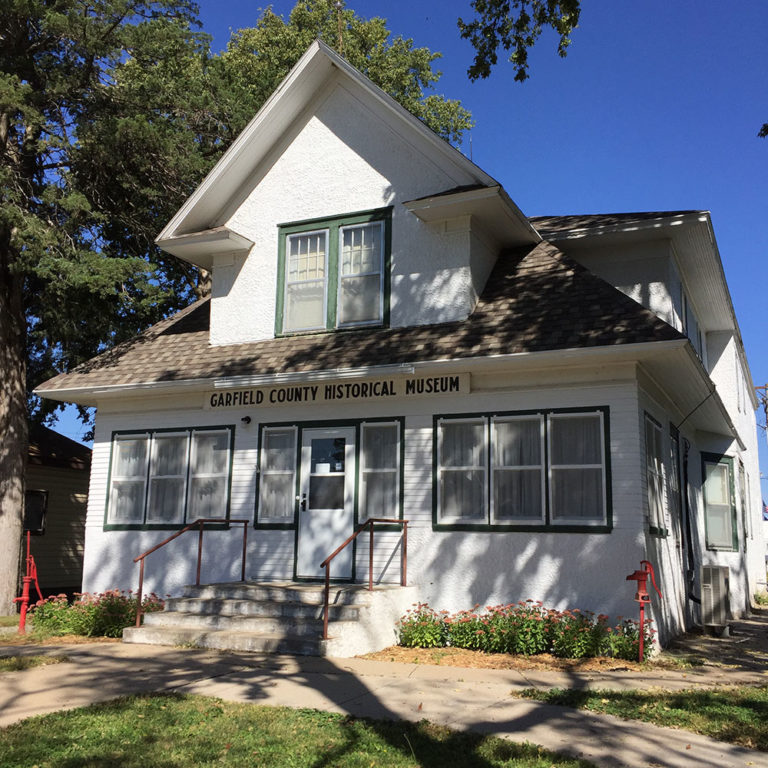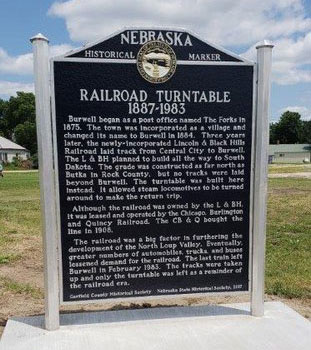Garfield County was established in 1881 and Burwell was defined as the county seat after the Burlington railroad laid tracks on the south side of the river to Burwell in 1887. As the only incorporated town in Garfield County, Burwell is home to many historical sites for families to enjoy while driving through the sandhills. Interested in more history of Burwell, read on at Virtual Nebraska.
Fort Hartsuff State Historical Park
Located 11 miles southeast of Burwell is Fort Hartsuff State Historical Park. From 1874-1881 Fort Hartsuff served as a buffer zone between the settlers and the Indians in the North Loup River valley. During this time soldiers patrolled the Loup and Cedar River Valleys and pioneered a new trail to the Black Hills gold fields. In 1961 the fort was restored and designated as a historical park to recognize its importance in Nebraska’s history.
For more information call 308-346-4715.
Burwell Bridge
Listed on Nebraska’s National Register is the Burwell Bridge. On June 25, 1939, floodwaters washed out the existing Highway 11 bridge over the North Loup River on the northern edge of Burwell. No effort was made to replace the structure until the following winter, in March 1940 engineers for the Nebraska Department of Roads and Irrigation designed a new steel bridge. The structure consisted of three steel stringer spans, supported by concrete abutments and piers. With a thirty-degree skew, the Burwell Bridge featured a seventy-three-foot span in the center suspended by cantilevered arms from the outside spans, for a maximum span of 109 feet. The Burwell Bridge represents one of the longest cantilevered beam structures identified in the statewide bridge inventory. It is technologically significant for its representation of long-span beam bridge experimentation conducted by the state engineer’s office in the 1930s.
Garfield County Frontier Fairgrounds
One of the most prominent places in Burwell and listed on Nebraska’s National Register is the Garfield County Frontier Fairgrounds. The idea of a permanent rodeo at Burwell was conceived by local real estate man Homer C. Stokes. In 1921 while on a business trip, Stokes attended a rodeo at Norton, Kansas, and decided that Burwell would be a good location for such an event in conjunction with the Garfield County Fair. A corporation was formed, land was purchased, and the erection of permanent structures began. The first rodeo held in Burwell was in September 1922 and attracted nationwide interest. By the 1930s the rodeo had become one of the major shows on the rodeo circuit. Nebraska’s Big Rodeo at Burwell is the oldest continuous rodeo in Nebraska and retains most of the 1922 structures.
Garfield County Historical Museum
The Garfield County Historical Society was originally organized in March of 1965 with the intent of establishing a museum for the county. In 1969 a generous donor bought the building that housed Dr. Cram’s Hospital and donated it to the historical society. When donated to the historical society the building underwent a desperate repair and cleaning. On July 9, 1972 the Garfield County Historical Museum was dedicated and opened to the public. Today, a visit to the museum is a walk through Garfield County’s history. Rooms included in the museum include a library, surgery room, Cowboy/Indian room, tool room, military room, parlor, bedroom, country school room, etc.
Hours: Vary by season
Contact any of the following:
Tony Larsen: 308-346-4786 OR 402-217-2000
Marilyn Mattley: 308-346-5007
Margie Gumb: 308-346-4580
Marge Beat: 308-346-5107
Donna Garwood: 308-348-2214
Cowboy Hang-Time
Unveiled in the Summer of 2005, the bronze statue “Cowboy Hang-Time” stands prominent on a seven ton piece of granite at the east entrance to Burwell’s downtown business district. This six foot high original bronze statue of a bucking horse and rider was sculpted by renowned western artist Herb Mignery. This sculpture recognizes and celebrates the community’s western heritage and Nebraska’s Big Rodeo. In 2014, two of the original bucking gates from the historic rodeo arena were installed as as a backdrop for the statue.





